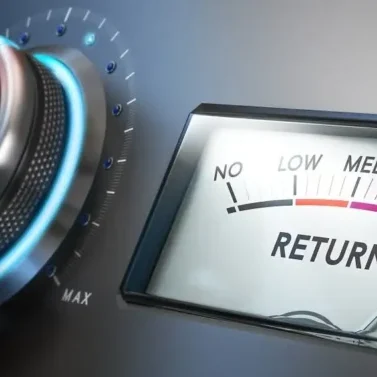FedEx Case Study (P&D) – Route Acquisition With a Small Business LBO
Summary: This article presents the case study of how a client used a leveraged buyout (LBO) to acquire a FedEx Pickup and Delivery (P&D) route. In recent years we have helped clients finance these acquisitions using a LBO strategy.
Although not widely known, FedEx operates many P&D routes through third parties. These routes are a niche opportunity for business owners that want to become entrepreneurs. It gives them the option to partner with a great brand that offers excellent service.
LBOs are not often associated with small businesses acquisition in the popular press. However, they can be a great vehicle to acquire and grow a small business. Please note that the route was acquired by a small private company that is not publicly listed. Consequently, all the names have been changed to protect the privacy of the participants. Any resemblance to a person or entity is purely coincidental.
In this case study, you learn:
- How the buyers found the opportunity
- Why the buyers used a LBO structure
- Financial structure details
- Transaction pitfalls and solutions
1. Finding the opportunity
In our experience, many buyers have a difficult time finding the right FedEx opportunity to acquire. Routes can be popular acquisitions, and sellers often have the upper hand. Demand allows sellers to command high prices, which makes it challenging to get financing for the transaction.
In this case, the buyers were looking for a business that had routes in their midsize city. Initially, they considered line-haul, pick up, and combined routes. After evaluating the advantages and disadvantages of each opportunity, the buyers settled on a busy P&D route with decent coverage. The buyers were able to find this opportunity in a couple of months which is faster than usual .
2. Why use a leveraged buyout for the acquisition?
A leveraged buyout is a way to finance business acquisitions that minimizes the equity requirements on the buyers. A LBO allows the buyers to use a business acquisition loan to cover 90% of the acquisition. The remaining 10% would be put into the transaction by the buyers as an equity injection.
The LBO allowed the buyers to acquire a $2,000,000 company with a 10% equity injection of $200,000. The equity injection came from combining their lifetime savings.
The buyers had limited funds, so a leveraged buyout allowed them to maximize their investment. LBOs can be an effective way to finance a FedEx route acquisition. LBOs are not without risk and should be used carefully.
3. Pricing and financial structure
The buyers started looking for financing shortly before their Letter of Intent (LOI) was executed with the seller. The LOI sets the details of the offer; therefore, it is needed before financing can be negotiated.
It's important to note that for an LBO to have a 10% equity injection rather than a bigger one, the buyers offer must be in line with the lender's valuation of the business. For the transaction to work, the buyer, the seller, and the lender must agree on what the company is worth. Otherwise, the buyers will need to make up the price difference.
In this case, the seller accepted an offer for approximately 3.5 times the seller's discretionary income. The offer was in line with the lenders valuation the company. This offer allowed the buyers to keep their equity injection at the 10% minimum.
The acquisition was structured as follows:
- 5% sellers financing
- 10% equity injection
- 85% business acquisition loan
a) Seller financing
The seller agreed to finance 5% of the transaction with a term loan at a price that was on par with commercial loan prices. The seller's loan was subordinated to the principal acquisition loan and had a standby clause. Lenders often require a standby clause that stipulates that the seller's loan cannot be paid until the lender has been paid first.
b) Equity injection requirements
Small business acquisitions require a contribution from the buyer, referred to as an equity injection. An LBO looks to minimize the equity injection, but it cannot eliminate it.
Since the lender agreed with the valuation of the FedEx business, the buyer was required to put the 10% minimum. This amount cannot be financed and cannot come from the seller. It must come from the buyers. In this case, the buyers pooled their life savings and used them as the equity injection.
c) Business acquisition loan
Most small business acquisitions under 5 million dollars are financed using a Small Business Administration (SBA) backed facility. These loans come from private, bank, and institutional lenders. However, the loans have the SBA's backing. The SBA backing gives lenders incentives to make the loans available to small business owners.
Contrary to popular belief, qualifying for SBA backed loans is not harder than getting a regular loan. Actually, getting this type of business acquisition loan is easier than getting a typical commercial loan. The credit and collateral requirements are more lenient.
The buyers had prepared for this and had already assembled a basic package which included:
- Net worth statement
- Three years of personal tax returns
The seller also has to provide information to help the buyer justify the loan to the lender. In this case, the seller provided all the information promptly. It included:
- Three years of business tax returns
- Three years of corporate financial reports
- Debt schedule
Learn more about "How to get a business acquisition loan."
4. Transaction issues and solutions
In our experience, FedEx route acquisitions are somewhat harder to execute than regular acquisitions. Buyers should consider working with companies familiar with these transactions since it will make the process easier. Here are some common pitfalls we saw in this transaction and have seen in others:
a) Some lenders don't like financing routes
There is a common misconception that all SBA lenders are the same. In reality, every lender is unique and has their preferences and dislikes. Finding one that is comfortable with routes is not easy and may take some time. In this case, the buyers had to go through a few lenders before finding us.
b) Closing is difficult
Executing the closing is an issue we often run into when financing a FedEx acquisition. FedEx is a business that runs every day and needs ongoing management attention. Consequently, the buyers free time during business hours is very limited. Closing the sale and transferring ownership has to be executed in a way that does not disrupt operations. Furthermore, the buyer needs to take control of the business and begin operations immediately.
c) FedEx has some control of the closing date
FedEx has some control over the closing date and may object to closings during their busy periods. From their perspective, customer service is paramount, and they want to avoid potential issues and interruptions during critical times.
d) Getting a landlord waiver is difficult
FedEx operates their business in an interesting way. Independent business owners license the routes from FedEx. However, delivery vehicles are housed and serviced at FedEx owned facilities. This ensures smooth logistics operations but presents a key issue during the acquisition.
Lenders need FedEx to sign a landlord waiver, which provides them access to the vehicle and facilities. In our experience, FedEx does not sign these waivers. At least, they haven't in any of the transactions that we have funded. Fortunately, there is a way around this issue that works for all parties involved.
e) Experience is key
Having business experience is often an essential requirement for qualification. In the case of FedEx route acquisitions, the preference is that the buyers have experience managing a FedEx route. This requirement creates a problem for buyers that don't have experience.
The buyers ran into this issue during this acquisition. Fortunately, this is an issue that can often be solved to work for all parties in the transaction.
Note: Commercial Capital is not associated with the FedEx brand in any way.
Need to finance a FedEx route acquisition?
The first step to work with us is to submit this form. Once we review it, one of our associates will contact you to discuss the specific details of your acquisition.







